Samsung Galaxy S 2 (International) Review - The Best, Redefined
by Brian Klug & Anand Lal Shimpi on September 11, 2011 11:06 AM EST- Posted in
- Smartphones
- Samsung
- Galaxy S II
- Exynos
- Mobile
Camera - UI and Video Quality
The cameras on SGS2 get a sizable upgrade from the previous generation. To start, SGS1 shipped with a 5 MP rear facing camera with AF, and VGA front front facing camera, (though the USA variants only got one when SGS4G packed one), and devices that are essentially SGS at their core have since shipped with them, and sometimes with flash.
SGS2, however, includes an 8 MP rear facing camera with LED flash and autofocus, and a 2 MP front facing camera. Thus far it appears as though things are going to be considerably more constant across SGS2 variants, with all three USA-bound variants including the same specs on paper at least.
I suppose a good a place as any to start is the camera UI, which gets a significant revamping in SGS2. The UI is much cleaner and looks more mature, with less of the bubbly rounded edges and more of a clean square look. There’s also no toggling UI elements on and off for a ‘lite’ view, you get this and this only. The bottom or right bar mirrors iOS’ camera application, with a toggle for photo and video, preview on the other side, and rectangular capture button in the center.
Tapping anywhere in the preview does an autofocus for that region, though auto exposure is either done by center metering, spot, or a matrix - tapping doesn’t change that.
You can long-press on either of the two top left icons (switch cameras, change flash) and add two more shortcuts. The settings button on the bottom left brings up an overlay with more capture options, which there is a wealth of.
Self shot functionality, flash, shooting modes, scene modes, exposure, focus modes (auto, macro, or face), resolution, white balance, ISO, metering, outdoor visiblity (an mDNIe toggle), anti-shake (electronic), auto contrast, blink detection, image quality, GPS, and storage location, phew - anyone still with me? That’s about everything, and I’d encourage checking out the gallery for a tour of all of it.
Switching to video mode keeps much the same settings, just with the differences you’d expect to accommodate video. Video capture resolutions include VGA, 480p, 720p, and 1080p, flash is either on or off, and there are fewer shooting modes. For some reason, the SGS2 uses 480p by default instead of 720p or 1080p, honestly I don’t know why anyone would use anything but those two higher settings.
The UI also correspondingly goes transparent to accommodate the 16:9 aspect ratio of these modes, though it doesn’t disappear or go away fully.
I suppose that’s as good a time as any to talk about video quality on SGS2. The device has continual autofocus, which you can see working in our test videos. We’ve done the usual thing and taken videos at the bench location with a reference Canon Vixia HF20 alongside the phone-under-test on a dual-camera bracket. I’ve taken comparison video from the camcorder and the SGS2 and uploaded the lot to YouTube, in addition to putting zipped up copies on the server (415.1 MB) for interested parties to download and see without the YouTube transcode.
In 1080p mode, SGS2 records 1080p30 video in H.264 High Profile with 1 reference frame at 17.0 Mbps. This is 2 Mbps above the Droid 3’s 15 Mbps High Profile 1080p video which we were a fan of, and it now appears that Exynos 4210 has just as competent of a hardware encoder as OMAP 4430, supporting high profile features and delivering high bitrate at the same time. Audio however is just single channel AAC at 60 Kbps, which is disappointing considering the SGS2 has two microphones, though it appears that top mic is used exclusively for Audience.
Subjectively the 1080p30 video shot on SGS2 looks like the best we’ve seen so far, there’s no blocking in the dark regions, great high spatial frequency detail, and really nothing to complain about. Exynos also supports 16x16, 8x8, 4x4, and 8x16 DCTs, but only encodes with backward references and one reference frame (much like OMAP4’s encoder). The point is that there’s still room for even better encoder efficiency which would come from encoders that use 2–4 reference frames and forward references. Sadly such encoders probably won’t be around for a while however.
The 720p30 preset records at 12.0 Mbps with the same encoding features as 1080p, meaning its encoding is of similar quality at this preset.
There’s a difference in crop factor that takes place when switching between 720p and 1080p shooting modes. 1080p clearly puts the sensor in a mode where it only reports a square 1920x1080 shaped region back, whereas 720p appears to perhaps use a 2x2 binning, and 480p or lower resolutions appear to just decimate the full sensor output. The result is that as you move to lower video resolutions, you get a wider field of view.
Again video recording quality on SGS2 is decidedly awesome in 1080p mode, though 720p could be better with better encode settings, the device shoots some of the best video we’ve seen out of a smartphone to date.


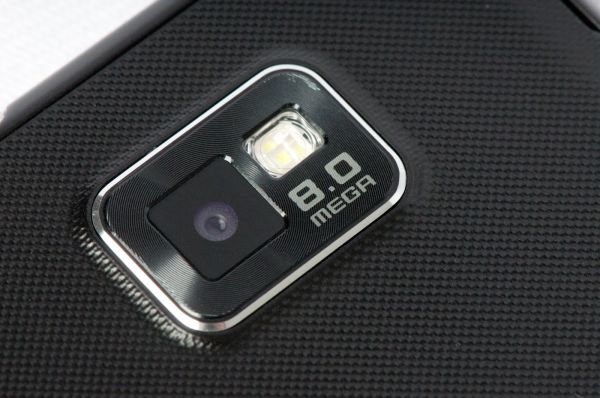

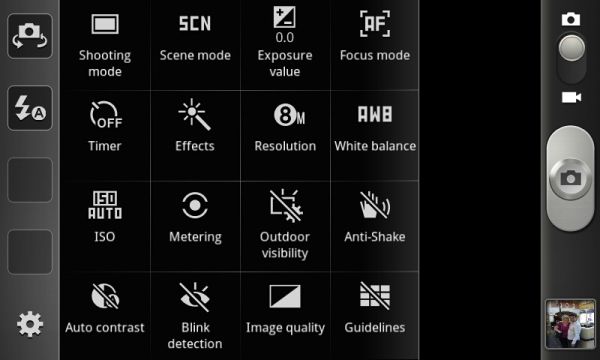
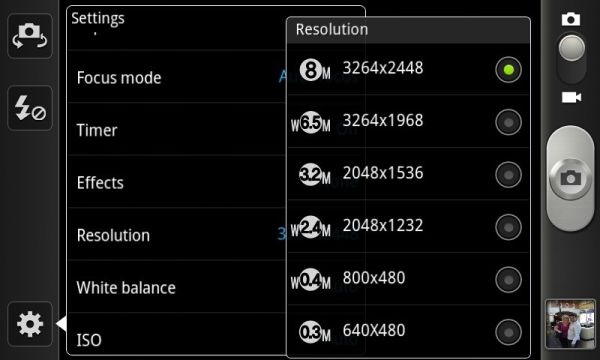

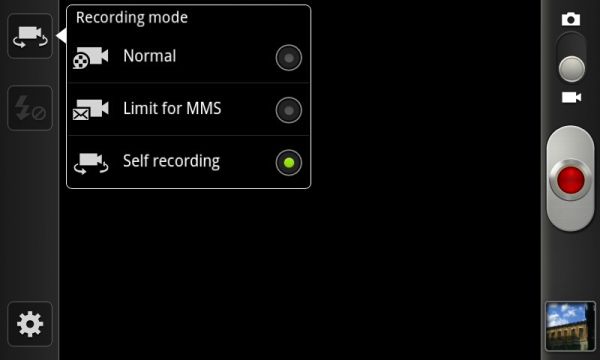
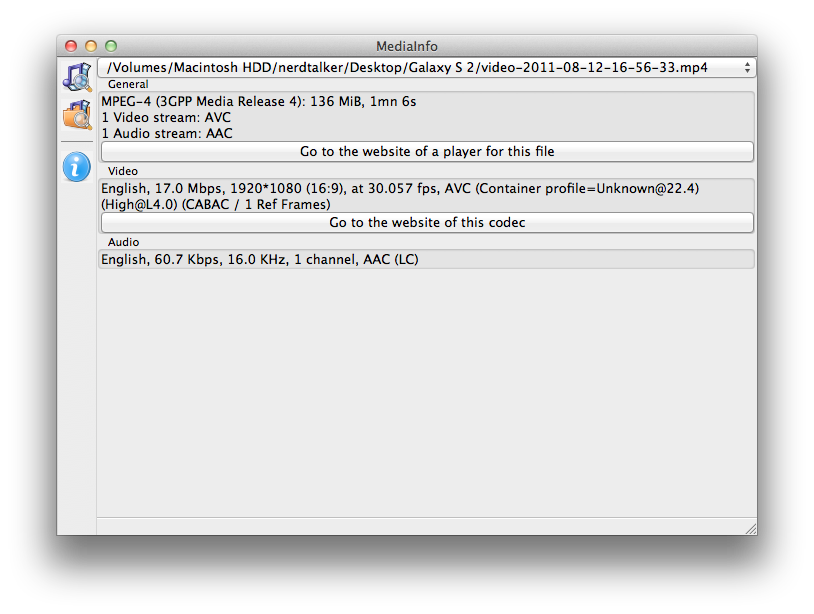








132 Comments
View All Comments
VivekGowri - Sunday, September 11, 2011 - link
I literally cannot wait to read this article, and I similarly cannot wait for SGS2 to launch in the US.ImSpartacus - Sunday, September 11, 2011 - link
You guys don't get early access to drafts?niva - Monday, September 12, 2011 - link
I own an original Galaxy S, until it's been proven that Samsung updates to the latest Android within a month after major releases I will not buy anything but a Nexus phone in the future (assuming I even go with Android). By the time that decision has to be made I'm optimistic there will be unlocked WP7 Nokias available.Havor - Monday, September 12, 2011 - link
Seriously , whats the problem, I was running 2.2 and 2.3 when they came out, could have them sooner, I just dont like to run roms with beta builds.So you never heard of Rooting and Custom Roms?
Its the nature of companies to have long and COSTLY eternal testing routs, done mainly by people with 9 to 5 jobs, as delivering buggy roms is bad for there name, but then so is not updating to but its lots less hurtful, as most people dont care or know any better.
Next to that if your phone is a phone is customized with extra crapeware by your provider it can be that it takes months before you get a update even do Samsung delivered one a long time ago.
The rooting scene is totally different, its done by nerds with passion for what they do, and yes the early/daily builds have bugs but also get mouths quicker reported and fixed by the scene.
And imho are the final updates just as stable as the factory builds.
Dont like how your Android is working?
Stop bitching and fixed your self, its not that hard, as it is a OS platform, just make sure you can root your phone, before you buy it.
The following website explains it all.
http://androidforums.com/galaxy-s-all-things-root/...
http://androidforums.com/galaxy-s-all-things-root/
vision33r - Monday, September 12, 2011 - link
If it's your personal phone, you can do whatever you want. However like some of us here with jobs that let us pick phones. One requirement is the phone has to be stock and no rooting allowed.Samsung is about the worst of the 3 makers in terms of software updates.
niva - Monday, September 12, 2011 - link
Seriously calm down, I've heard plenty about rooting and custom roms but phone hackery is not something I'm interested in right now. I don't have the time or energy for it. I shouldn't have to manually go through rooting and updating my phone, especially when security issues are involved.I like the way 2.2 is working on the SGS. I bought this phone from a friend who upgraded and it's not something I would've paid the retail price for. I've not run into anything so far that's made me actually bother with the rooting and manual upgrade process. I've not read into rooting the phone or updating it, but I'm sure if I get into it this will take me a long time (hours/days) which I shouldn't need to sacrifice to run the latest version of the OS.
From the political standpoint the blame is both on Samsung and T-Mobile apparently in terms of getting the new revisions out.
From my personal standpoint I despise all companies who do not use the default Android distro, running skins and secondary apps, on the phones they ship out. While some of the things they do are nice, it slows down their ability to keep up with android revisions.
On the other hand, my wife's Nexus (original one) updates faster than internet posts saying Android 2.3.x has been rolled out. It's friggin awesome. She had one problem with battery draining really fast after a recent upgrade but I managed to fix that after a couple of hours of forum searching and trying different things.
So it's simple, if I will buy another Android in the future, it will be a Nexus phone, where I know from personal experience that everything works in terms of having the latest and greatest. Notice the Nexus S is made by Samsung, it's for the most part identical to the phone I have, yet gets the updates immediately and doesn't have the known security problems I'm exposed to.
ssj4Gogeta - Monday, September 12, 2011 - link
Well, the international version got 2.3.3 around ~3 months ago here (and earlier for other countries).poohbear - Tuesday, September 13, 2011 - link
vision33r u dont know what you're talking about. People bitch and complaina bout software updates, but how are the quality of those updates? when its updated too soon there are bugs and ppl complain, updated later ppl complain about the wait times. I remember last year Motorola said they're not updating their XT720 to android 2.2., they're leaving it at 2.1. S korea Motorola was the only branch that decided to do it, but guess what? 2.2 was too much for the hardware in the XT720 to handle, and it ran slooooow! XT720 users all over complained about it, but the reality is the phone couldnt handle it. 90% of smartphone users want something stable that works, they dont care about having the latest and greatest Android build. So if Samsung errs on the side of quality and takes more time to release stable quality software, then all the power to them!anishannayya - Friday, September 23, 2011 - link
Actually, if updates are your hard-on, then you'd likely be looking at Motorola in the future (due to the Google acquisition).The entire reason why the Nexus lines of phones are quick to get updates is because the are co-developed with Google. As a result, these phones are the ones the Google developers are using to test the OS. When it is ready to go, it is bug free on the device, so Samsung/HTC can roll it out immediately.
At the end of the day, any locked phone is plagued by carrier bloatware, which is the biggest slowdown in software release. Just buy an unlocked phone, like this one, in the future.
ph00ny - Sunday, September 11, 2011 - link
It's awesome to see this article finallyI'm glad François Simond aka supercurio contributed to the article
Btw that slot on the left is for the hand strap which is very popular in asia for accessory attachments